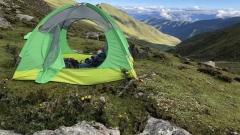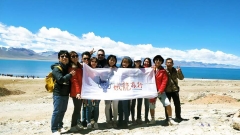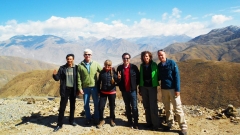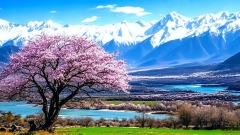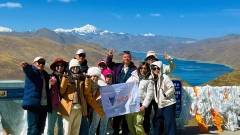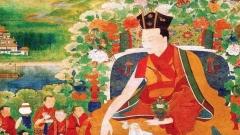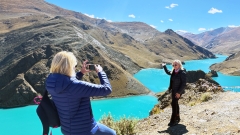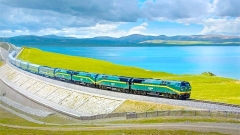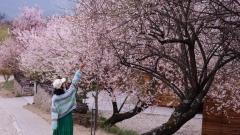Tucked between high mountain ranges and the edges of human imagination, Shambhala has been whispered about for centuries — a hidden kingdom of peace, a mystical mandala, and the birthplace of one of Tibetan Buddhism’s most esoteric teachings: the Kalachakra Tantra. For pilgrims and curious travelers alike, Shambhala functions on two levels: as a spiritual destination that requires inner readiness, and as a landscape of real places whose natural beauty and sacred dimensions have inspired seekers and explorers.
What Is Shambhala?
Shambhala (also rendered Shambala) is traditionally described as an inner and outer realm of perfection: a pure land where compassion, wisdom and spiritual practice produce a society free from conflict, disease and shortage. Western readers will often encounter the term “Shangri-La” — a popular translation made famous in 20th-century literature — but within Tibetan Buddhism Shambhala has very specific doctrinal ties to the Kalachakra Tantra, a complex system of cosmology, meditation and ritual.
In the Kalachakra tradition, Shambhala is more than metaphor. It is presented as a mandala — an ordered cosmos shaped like an eight-petaled lotus. Each petal is said to contain large administrative realms and countless villages, while the central city, Kalapa, is both royal capital and spiritual axis. The society of Shambhala is governed by enlightened rulers, protected by bodhisattva incarnations, and bathed in a light of internal purity that renders day and night indistinct. For believers, Shambhala is an ideal that points to ethical living, spiritual discipline and an integrated society rooted in the Kalachakra teachings.
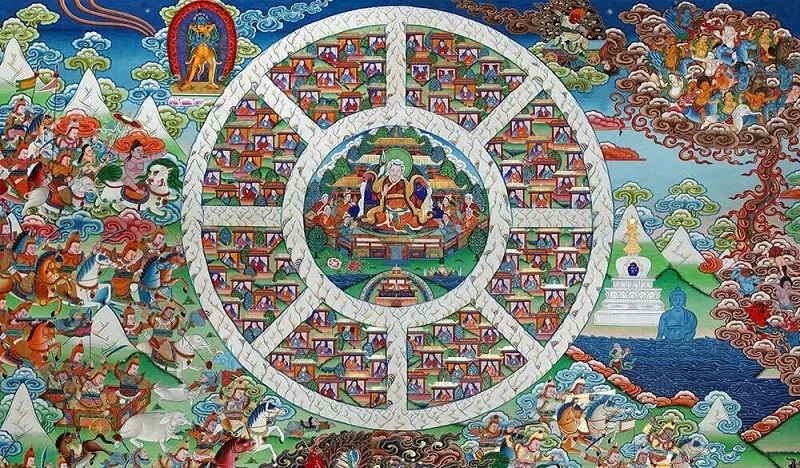
Shambhala is a mandala
Where Is Shambhala?
Descriptions of Shambhala in Tibetan sources place it in a hidden, highland region guarded by impenetrable snow mountains — often associated with the Gangdise (Kangrinboqê) range or realms beyond known rivers. The classical accounts describe a landscape of inner sanctity, encircled by mighty peaks and divided into concentric administrative regions. Ancient texts and later Tibetan commentaries insist that only those initiated into the Kalachakra system and possessing the proper spiritual maturity can perceive or access Shambhala.
This esoteric boundary explains why Shambhala resists simple mapping. Over the centuries, explorers, monks and mystics have proposed many earthly locations — from parts of the high Himalaya to valleys in the Tibetan plateau and beyond. Whether these places are the literal Shambhala, symbolic echoes of it, or landscapes that inspired the myth, each candidate offers a different doorway into the legend.
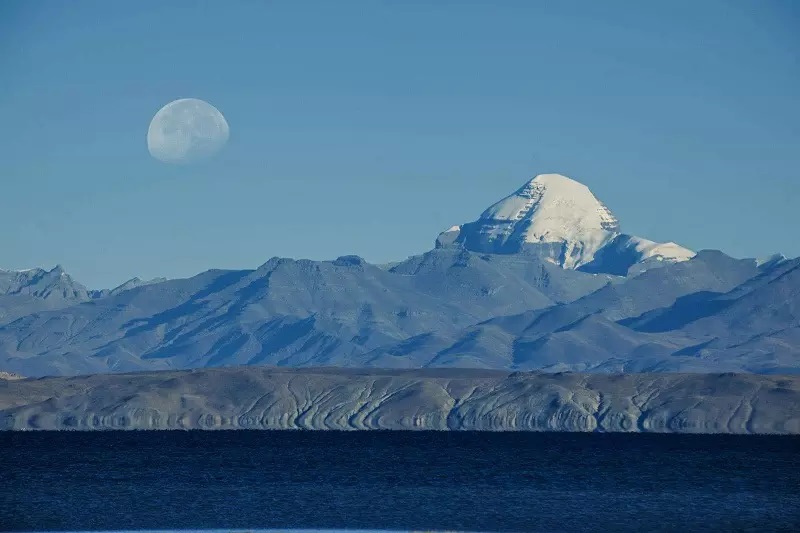
Gangdise Mountains
The Kalachakra Tantra: The Spiritual Heart of Shambhala
The Kalachakra Tantra is the scriptural seed from which Shambhala grows. According to the tradition, the historical Buddha taught Kalachakra to a king named Suchandra (also called Shambhala’s sovereign), bestowing initiatory instructions that later reached Tibet. The original text is said to have been very large; what survived in transmission is a condensed but still dense corpus of doctrine dealing with cosmology, subtle body practices, ethical disciplines and rituals for world renewal.
The narrative links Shambhala with specific historical figures — kings and lineages that are portrayed as responsible for safeguarding the teachings and guiding their people in a spiritually advanced society. In Tibetan commentaries, this intertwining of scripture, lineage and political structure explains why Shambhala appears both as a spiritual mandala and as a functioning kingdom led by enlightened rulers.
Kalapa: The Capital of Shambhala
Kalapa, the capital city at Shambhala’s center, is painted in luminous detail in the sources. Palaces of gold and turquoise shine from within, gardens bloom year-round, and temples dedicated to time and cosmic forces — such as the Kalachakra deity and Vishvamata — stand alongside sun and moon shrines. The sovereign is conceived as an embodiment of Vajrapani, a protector bodhisattva, whose presence makes the city a focal point of blessing and spiritual power.
The urban life of Kalapa is idyllic in mythic terms: no hunger, no warfare, and a population dedicated to the Kalachakra path. While such an image functions as a spiritual map more than a literal travel brochure, it has powerfully shaped how Tibetans, Buddhists, and later Western seekers imagine an ideal society organized around compassion, wisdom and ritual practice.
Shambhala’s Legends, Histories and Expeditions
Shambhala moved from scripture into geopolitical fascination as the modern world entered the Himalayas. The 20th century in particular produced high-profile expeditions and adventurous searches that stitched the myth into global imagination.
Nicholas Roerich, a Russian artist and explorer, led an extended expedition in the 1920s that sought hidden spiritual centers across Central Asia and the Himalaya. Roerich’s journey — partly artistic, partly esoteric — amplified the mystique of a hidden paradise beyond mapped territory.
Other expeditions took darker turns. In the 1930s and 1940s, some German and Nazi-funded ventures came seeking archaeological and esoteric evidence that they believed could validate racial myths or occult technologies. Their interest exploited Shambhala mythology for political ends, and their stories ended up mixed with rumor and selective interpretation.
Famous mountaineers such as Eric Shipton added new elements to the lore: Shipton reported large humanoid footprints near Everest in the early 1950s, fuelling Western interest in the yeti and associating the creature with thresholds between worlds. Meanwhile, Tibetan practitioners continued to recount visions and pilgrimages—like the poignant story of Tulshuk Lingpa in the 1960s, whose reported near-encounter with an otherworldly valley reinforced the interior, visionary side of the Shambhala narrative.
Together these expeditions and stories formed a tapestry: some threads were scientific, some political, and many devotional. For modern travelers, they provide historical context — and a reminder that the search for Shambhala has always mixed outer expedition with inner preparation.
Possible Earthly Locations for Shambhala
While scriptural tradition emphasizes Shambhala’s inner, mandalic nature, centuries of seekers have proposed several real places that echo the myth’s geography and aesthetic:
Shangri-La (Zhongdian), Yunnan
Renamed in 2001 to attract cultural tourism, the valley and city often associated with James Hilton’s Lost Horizon share features with Shambhala lore: sheltered valleys, rich plateau ecology, and a cultural atmosphere suffused with Tibetan Buddhism. Whether or not Zhongdian inspired Hilton directly, its highland charm continues to draw travelers seeking an earthly Shangri-La.
Mount Kailash, Tibet
A sacred axis for multiple religions, Mount Kailash occupies central space in the Tibetan spiritual imagination. It’s often associated with cosmic centers and the notion of a world axis — an image linked in some accounts to Shambhala’s centrality. Pilgrimage around Kailash remains one of the most powerful ways to touch the mythic dimension of the region.
Daocheng Yading, Sichuan
Nickname: “the last pure land on earth” — Yading’s trio of sacred peaks, glacial lakes and high meadows provide a visual analog to the pristine landscape described in Shambhala narratives. For travelers, the region’s conservation ethos and stunning vistas give a palpable sense of liminal space.
Sikkim and Kanchenjunga Region
Reports and visionary accounts from Tibetan masters have placed the gateway to hidden realms somewhere in the eastern Himalayan arc — Sikkim among them. Legends describe verdant valleys and secret caves around Kanchenjunga where tertöns (treasure-revealers) and saints have glimpsed extraordinary surroundings.
Each candidate offers practical experiences for visitors: valleys to hike, monasteries to visit, and cultural contexts to explore. None, however, can claim definitive proof of Shambhala, because the tradition itself insists on spiritual readiness as the key to entry.
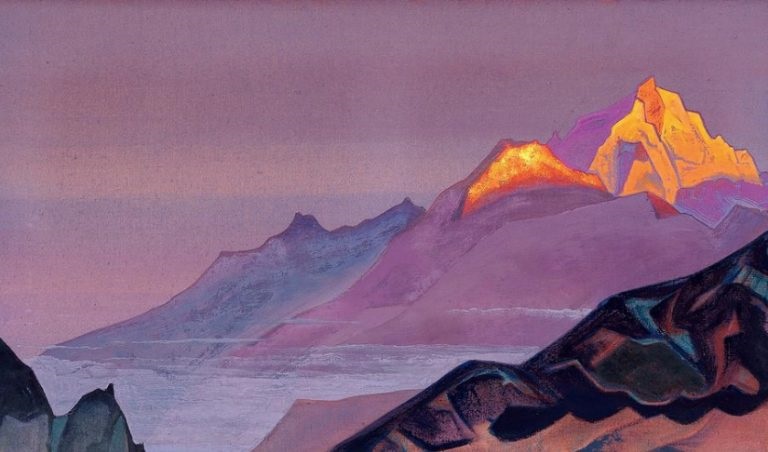
The Mystical Land of Shambhala
Shambhala as Inner Path and Metaphor
Beyond mapping, Shambhala functions as an ethical and meditative ideal. The Kalachakra teachings emphasize cycles of time, ethical conduct, and practices that align individual transformation with communal wellbeing. In this sense, Shambhala can be read as a practical blueprint: a model of social life organized around compassionate governance, education, and ritual care.
Modern spiritual movements and some Western teachers have adopted Shambhala imagery to develop contemplative programs and secular ethics. These interpretations stress inner cultivation, mindfulness and the aspiration to build more compassionate institutions — translating mythic ideals into civic practice.
Visiting Shambhala’s Traces: Practical Advice for Travelers
For international tourists who want to experience landscapes and traditions associated with Shambhala, a mindful approach balances curiosity with respect. The following travel advice helps you prepare for high-altitude visits, sacred sites, and cultural encounters.
Altitude, Health and Timing
Many candidate sites sit at very high elevations. Acclimatize slowly: spend a day or two in Lhasa or a lower town before ascending, hydrate, and avoid heavy exertion in the initial 48–72 hours. Consult a physician if you have heart or respiratory conditions. Shoulder seasons (late spring and early autumn) often offer stable weather and fewer crowds.
Permits, Routes and Logistics
Travel to Tibetan areas typically requires permits and sometimes a guided tour. Plan logistics in advance, especially for remote regions like Mount Kailash or high plateau circuits. Local travel providers can handle permits and coordinate with monastery offices or local communities.
Cultural Etiquette and Blessings
When visiting monasteries or sacred sites, dress modestly and follow simple protocols: remove shoes where required, walk clockwise around stupas and prayer wheels, avoid touching ritual objects, and ask before photographing ceremonies or individuals. If you offer a khata (ceremonial scarf) present it with both hands and a bow; small donations for butter lamps or monastery upkeep are appreciated.
Hiring Guides and Supporting Communities
A local guide not only translates but also mediates cultural sensitivities and helps arrange respectful encounters with living teachers or custodians. Choose guides and operators that employ local people and respect conservation and cultural heritage.
Environmental Responsibility
High-altitude environments are fragile. Pack out non-biodegradable waste, avoid single-use plastics where possible, and respect grazing lands and local wildlife. Tread lightly, and support conservation-minded lodges and community initiatives.
Questions Travelers Often Ask
Can foreigners enter sacred inner sanctums?
Access varies. Some inner temple rooms and tantric colleges restrict entry to ordained practitioners or initiated visitors. Always inquire at monastery offices and respect their rules.
Are there times when rituals or festivals are best seen?
Kalachakra initiations, monastic cham dances and seasonal festivals are highlights — but they follow lunar calendars and local timetables. Check festival dates well in advance.
Is it safe to travel to remote regions connected with the legend?
Many areas are safe when visited through reputable tour operators. Road conditions and weather can be challenging; plan buffer days and travel with experienced guides.
Bringing the Shambhala Myth Home
You don’t need to find a hidden city to be touched by Shambhala. The legend invites us to imagine what a kinder, wiser society might look like. Whether you travel to Mount Kailash, wander the valleys of Yunnan, or sit in a monastery listening to the low hum of prayer, you carry the possibility of Shambhala with you: a reminder that inner transformation and outer compassion belong together.
If you would like a tailored itinerary that traces the cultural and geographic echoes of Shambhala — from Lhasa and Mount Kailash to Shangri-La and Daocheng Yading — China Dragon Travel offers guided trips designed for international visitors that emphasize respectful cultural engagement, safety at altitude, and authentic encounters with local practitioners. Contact China Dragon Travel for customized journeys that honor the spirit of Shambhala while supporting the communities who safeguard these sacred places.



